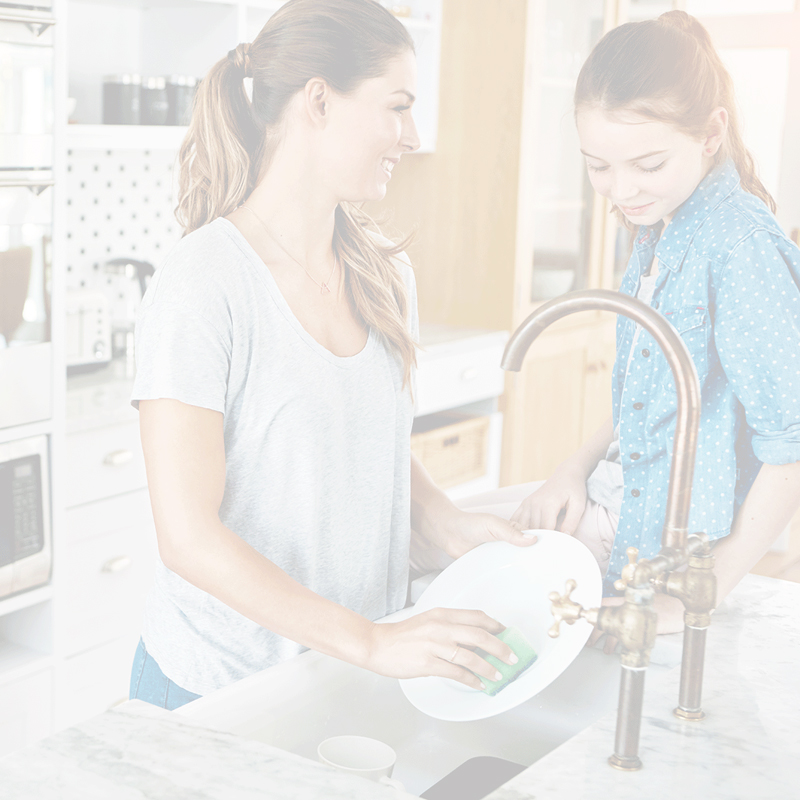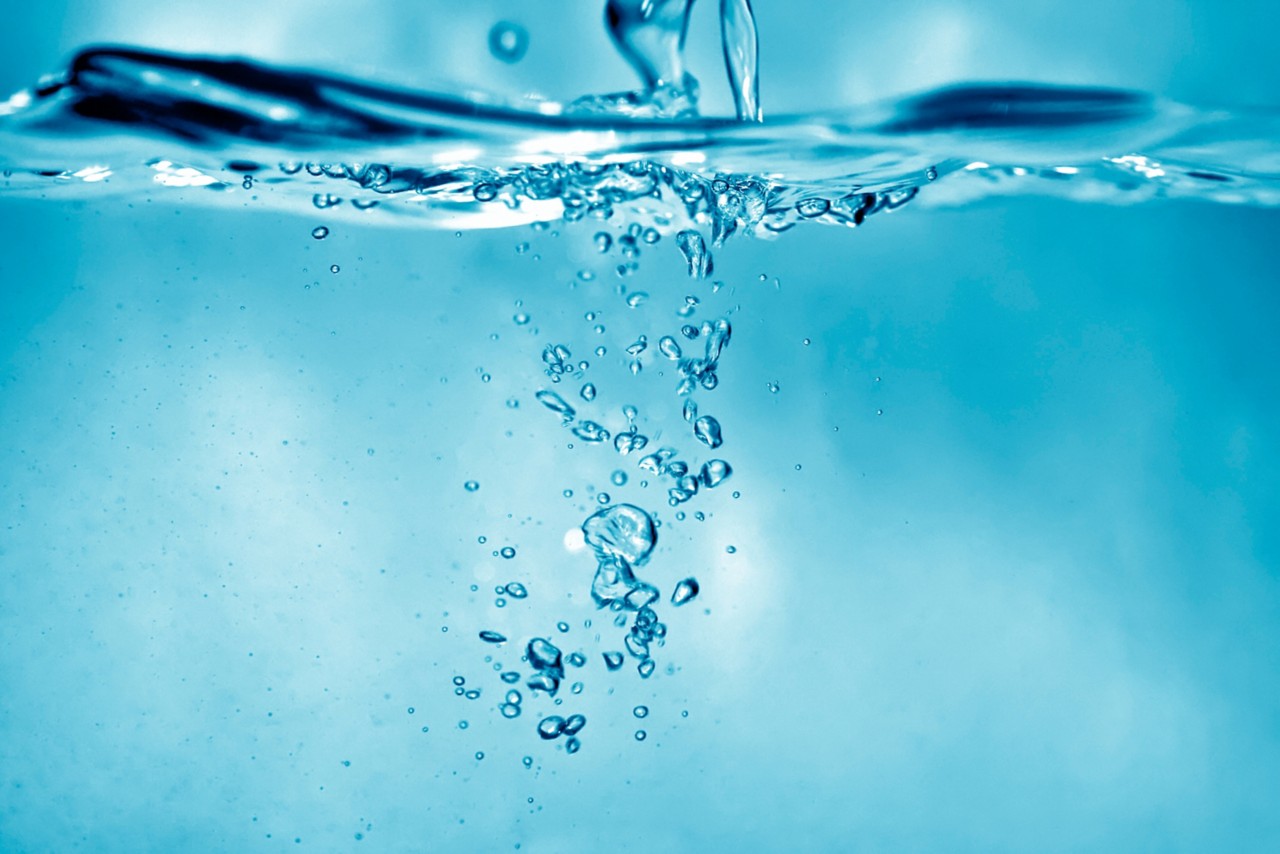Stop Wasting Water and Money. FIND A LOCAL PRO
Conserving Water: It Adds Up
Fortunately, there are many products on the market designed to help conserve the water on our planet, like low-flow showerheads and low-volume toilets. But we don’t have to necessarily spend money to save water. There are thousands of ways to make a difference every day that will protect this vital resource while helping to cut monthly utility bills.
Preserving this essential element is not a herculean task; it only takes some simple steps incorporated into our lives. While many supporters of our beautiful planet do things like collect rainwater and adorn their homes with low maintenance landscaping indigenous to their climate so no additional watering is needed, you can actually “donate” gallons of water every day that will add up to a tremendous contribution.
Here is our list of the Top Five Easy Ways to Make Your Home “Waterproof”:
1. Check out all the sinks in your home and your outdoor hose; a simple turn of a wrench to fix any leaky faucets can add up to a savings of over 300 gallons a month.
2. Conduct a test on your toilets by adding a few drops of food coloring to the tank. If any of that color finds its way into the bowl itself, then you probably need to replace the flapper and you’ll probably wind up saving as much as 600 gallons of water per month.
3. Make sure all your irrigation system’s sprinkler heads are in good repair and that they are in fact facing what you are trying to water and are not just wetting the pavement or the street.
4. Keep a close eye on your water bill every month and watch for fluctuations in consumption; it will keep you conscious of the amount you’re using and will also be an indicator of leaks.
5. Install a rain sensor on your irrigation system so you are not watering your lawn in storm.
And Here’s another Ninety-Five Ways to Save Water and Make a Difference Every Day:
6. Don’t run the water while you’re brushing your teeth – you’ll save 25 gallons a month.
7. Don’t run your washing machine unless it contains a full load – you can save 1000 gallons a month.
8. Scrape or soak your dishes instead of rinsing them and then don’t run the dishwasher until it is filled to its maximum capacity.
9. Take two minutes off your shower time or at least turn off the water while you wash your hair – you can save up to 150 gallons a month.
10. You can save up to 300 gallons a month if you leave the water off while you shave and just rinse the razor in a small pool of water in the sink.
11. Don’t use multiple glasses that will have to eventually be washed; drink your water from a tumbler that you can use throughout the day.
12. Use a hose nozzle or turn off the water while you wash your car – you can save up to 100 gallons.
13. Water your garden and even your lawn in the early morning or evening to retard evaporation and get the most out of the water you’re using.
14. Fill up a couple of pitchers to keep in the frig instead of running the water to get it cold enough to drink.
15. Make good use of organic mulch to beautify and help the soil retain moisture.
16. Recycle your water – take the runoff from rinsing fruits and vegetables into a pan and feed it to your houseplants.
17. If you compost vegetable food waste instead of using the garbage disposal all the time, you’ll save gallons of water.
18. Test your showerhead: if it can fill a one-gallon bucket in less than 20 seconds it should be replaced with a more efficient model.
19. If water runs off your lawn easily, split your watering time into shorter periods to allow for better absorption.
20. Check your pool periodically for leaks, especially if you have an automatic refilling device.
21. Instead of hosing down your driveway or sidewalk, sweep it clean.
22. When washing dishes by hand, don’t let the water run while rinsing.
23. Consider appliances that are designed for air-cooling instead of water-cooling.
24. Instead of high maintenance and water hungry grass, select groundcover and shrubs for hard to water areas.
25. Install covers on pools and spas and check for leaks around your pumps.
26. Don’t overwater – if your soil is still moist two inches under the surface then you needn’t add more.
27. Defrost food in the refrigerator – don’t run water over frozen items to thaw them.
28. Use drip irrigation for shrubs and trees to apply water directly to the roots where it’s needed.
29. Make sure your new appliances have setting that allow you to adjust cycles and load sizes.
30. Don’t cut your lawn very short – if the grass blades are a bit longer, they will hold soil moisture more effectively.
31. Take your old fish tank water and give your plants a nutrient-rich treat.
32. Water small areas by hand for a more targeted watering approach.
33. Adjust the water temperature on your bath water after the tub already begins filling, not before.
34. Lay brick or pavers to create walkways and patio areas that require no moisture.
35. Collect water from your roof to water your garden.
36. When doing laundry, set the machine for the exact water level you really need.
37. Teach your children and remind yourself to turn off faucets tightly after each use.
38. Use a water-efficient showerhead and save as much as 750 gallons a month.
39. Don’t water your lawn on windy days when most of the water blows away or evaporates.
40. Water your plants well, but not as often; the roots will grow deeper and your plants stronger.
41. Know where your master water shut-off valve is located so you can get to it quickly in an emergency.
42. To decrease water from being wasted on sloping lawns, apply water for five minutes and then repeat two to three times.
43. Group plants with the same watering needs so the right ones get the right amounts.
44. Use a minimum amount of slow-release fertilizer to promote a healthy and drought tolerant landscape.
45. Cascading fountains lose less water to evaporation than those spraying water into the air.
46. Patronize a commercial car wash facility that recycles water.
47. Avoid recreational water toys that require a constant flow of water.
48. Use a rain gauge to track rainfall on your lawn.
49. Encourage your school system and local government to develop and promote water conservation among children and adults.
50. Set a kitchen timer when watering your lawn or garden to remind you when to stop.
We are water Experts
Water quality is non-negotiable. To prove it, we've built state-of-the-art water quality labs and filled them with the best and brightest scientists — all so we can provide you with the best water of your life.
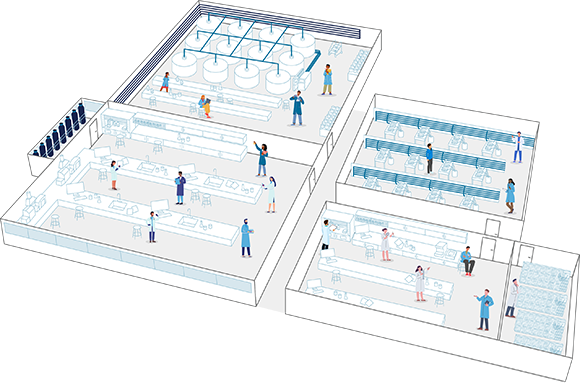
51. If your toilet flapper doesn’t close after flushing, replace it.
52. Make sure there are water-saving aerators on all your faucets.
53. Next time you add or replace a flower or shrub, choose a low water use plant.
54. Install an instant water heater near your kitchen sink so you don’t have to run the water while it heats up.
55. Make a mark of the water level of your pool at the skimmer and check in a day or so to see if you have a leak.
56. If your dishwasher is new, you likely don’t need to rinse your dishes before washing them.
57. Use a trowel, shovel, or soil probe to examine soil moisture depth.
58. If installing a lawn, select a turf mix or blend that matches your climate and site conditions.
59. When you save water, you save money on your utility bills too.
60. When the kids want to cool off, use the sprinkler in an area where your lawn needs it the most.
61. Make sure your swimming pools, fountains, and ponds are equipped with pumps.
62. Work with your landscaper to use and design plant that are water conscious.
63. Winterize outdoor spigots.
64. Insulate hot water pipes.
65. Wash your car on the lawn, and you’ll water your lawn at the same time.
66. Direct water from rain gutters to your plants.
67. Tell your friends about the ways you save water and encourage them to follow suit.
68. Support projects that use reclaimed wastewater for irrigation and industrial uses.
69. Use a hose nozzle or turn off the water while you wash your car.
70. Set cooling systems and water softeners for a minimum number of refills.
71. Wash dark clothes in cold water.
72. Leave lower branches on trees and shrubs to keep the soil cooler.
73. Report broken pipes, open hydrants, and errant sprinklers immediately.
74. Let your lawn go dormant during the summer.
75. Plant with finished compost to add water-holding matter to the soil.
76. Use sprinklers that deliver big drops of water close to the ground.
77. Listen for dripping faucets and running toilets.
78. Water only when necessary; don’t kill your plants with kindness.
79. Re-use the water left over from cooked or steamed foods as stock to make soup.
80. Adjust your watering schedule each month to coincide with natural rainfall amounts.
81. Give you pet a bath on the lawn, so you’ll be watering it at the same time!
82. When shopping for a new clothes washer, compare resource savings among Energy Star models.
83. Don’t flood your lawn or garden – apply water only as fast as the soil can absorb it.
84. Aerate your lawn at least once a year so water can reach the roots rather than run off the surface.
85. When washing dishes by hand, fill the sink basin or a large container and rinse when all the dishes have been soaped and scrubbed.
86. Catch water in an empty tuna can to measure sprinkler output.
87. Turn off the water while you shave and save up to 300 gallons a month.
88. To save water and time, consider washing your face or brushing your teeth while in the shower.
89. While staying in a hotel or even at home, reuse your towels – you do at home, you can while you’re away.
90. When back flushing your pool, consider using the water on your landscaping.
91. Throw trimmings and peelings from fruits and vegetables into your yard compost.
92. When you have ice left in your cup from a take-out restaurant, feed it to a plant.
93. Keep a bucket in the shower to catch water as it warms up or runs and use this water to flush toilets or water plants.
94. Install low-flow showerheads and faucet aerators.
95. Eat a bit less meat, especially beef; a typical hamburger can take 630 gallons to produce.
96. Don’t use your toilet as an automatic garbage can – flush only when you need to.
97. Recycle plastics, glass, metals, and paper.
98. When you give your pet fresh water, don’t throw the old water down the drain. Use it to water your trees or shrubs.
99. Wash efficiently: turn off the water while you soap your hands and rinse briefly.
100. Think before you twist that faucet and consider how you may re-purpose the water you use.
What's in your water?
start here
Worried about your water? Take control with our at-home water test kit. We'll analyze your water and recommend the best filtration or softening solution for your specific needs.
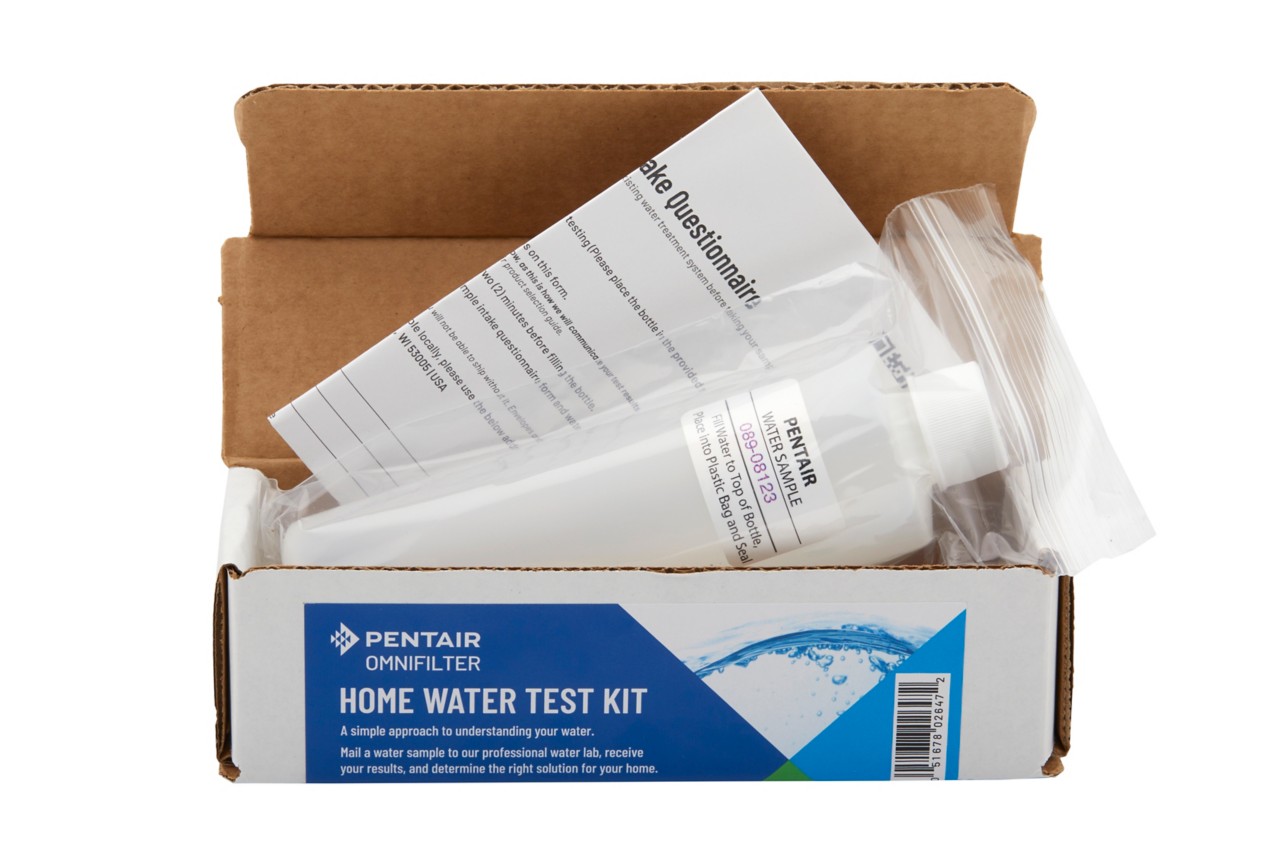

Water 101
Unleash the secrets of your H2O! Explore where water originates and discover the various water filtration solutions that transform it into drinkable water.
Related Articles
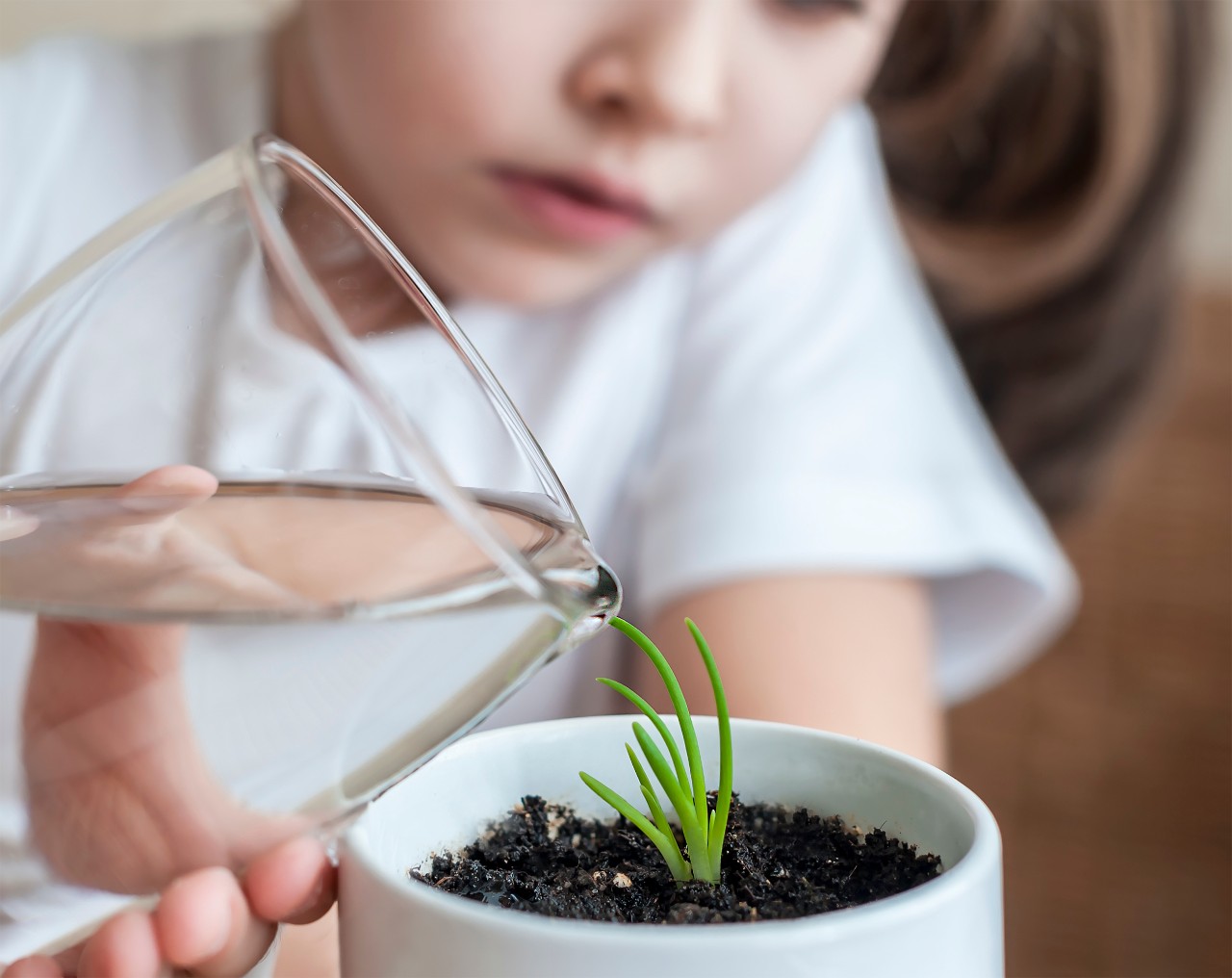
5 Plants You Didn’t Know Require the Most Water
A lot of homeowners, especially in drought-stricken areas, have…

Water Based Home Maintenance Checklist
Are you compiling your home maintenance checklist? Don’t neglect…
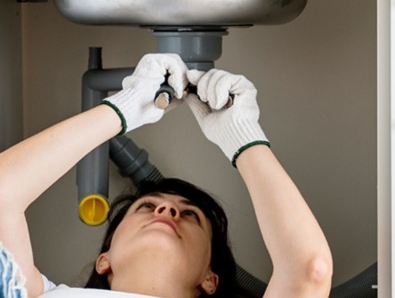
5 Service Tips for Your Home
As a homeowner, you know about the basics of routine...
Disclaimer: The information on this website has not been reviewed by the FDA. Products offered for sale herein are not intended to treat, cure or prevent any disease or health condition. No medical claims are being made or implied. Contaminants mentioned are not necessarily in your water.

